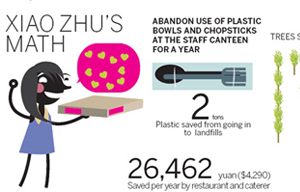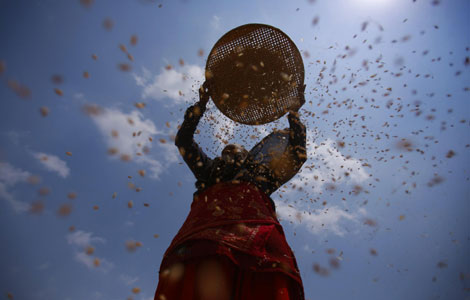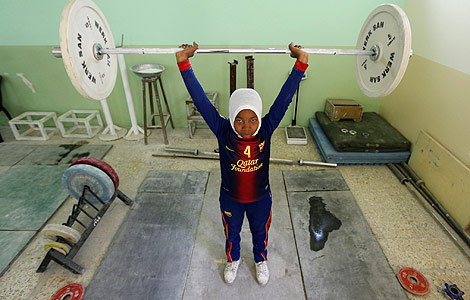Money spinner energizes village
Updated: 2013-05-07 11:20
By Ding Luyang in Dongliao, Jilin, and Sun Ye in Beijing (China Daily)
|
|||||||||||
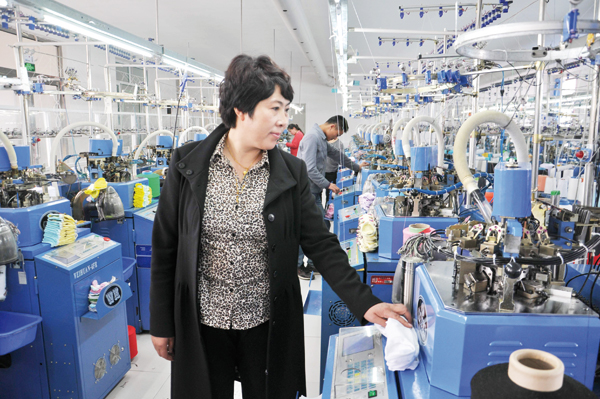 |
|
Han Li visits the village's socks factory, which produces 10,000 pairs of socks daily. Ding Luyang / China Daily |
For the last 10 years, Han Li has helped her fellow villagers almost triple their income. While an average villager earned 3,500 yuan ($560) a year, Han used to take home some 100,000 yuan. So when she became a leader of the village, she resolved to make a fortune for the entire hamlet, too.
"Everyone should have their own house and live as well as an urbanite," she says.
Han was a factory owner and businesswoman before becoming the secretary of the Party branch of Chaoyang village in Dongliao county, Jilin province in 2003. The village is home to about 2,000 villagers, half of them ethnically Korean.

She has proven herself to be a moneymaker with some star power.
Han followed the basic rule: Make full use of what you have.
The village used to grow only rice but the output was unsatisfying. The paddy field used a lot of chemical fertilizers and pesticides. After deducting the cost, the profit for every hectare of crop stood at only 15,000 yuan.
Han decided to use the land more efficiently by building a new eco-system uncommon in northern China. She started to raise crabs and crayfish in her own field.
The crustaceans feed on harmful bugs and unwanted weeds, which takes over the "task" of manual work. They excrete organic fertilizers so rice grows in the coveted green way. Organic rice fetches a higher price. On top of that, the 45,000 plus lobsters and crayfish in every hectare of land are sold for more than 60,000 yuan.
The system, which Han dubbed as "cubic and comprehensive", makes 150,000 yuan from every hectare. Her profitable example had the villagers emulating it in droves.
The village now has 267 hectares of land that prospers under the new system.
A local cooperative society takes charge of gathering all the produce. By streamlining the production line, there is economy of scale and savings on labor.
With such an efficient system, some of the farmers became free to take on a second job out of the village. Some of those who speak Korean have sought better-paying jobs in South Korea.
For those who stay put in the village, Han has come up with other ways to grow their fortune. She has set up factories, to process rice and manufacture socks. The socks factory produces 10,000 pairs of socks daily, which translates to 1,000 yuan of profit a day.
"With the factory-work wages, annual household income jumps from 1,000 yuan to close to 20,000 yuan," Han says.
She is also experimenting with a novel kind of poultry and cattle breeding. The village no longer goes for quantity. Instead, it now raises high-end quality chicken and lamb.
Its 500 selected lambs need special ranching. But when they mature in three to five months, they will bring in 100,000 yuan in extra income. Most of the lamb are sold to buyer in southern China.
Chaoyang village is now the richest suburb in the county, with more than 10 million yuan in fixed property. Residents make 9,870 yuan a year on average. And many own houses in the county or nearby cities.
"The secret to winning over villagers is simple," Han says. "You just need to lead them to a more prosperous, better life."
"Our villagers are capable and I'm confident of the future."
|
|
|
| Irish-American keeps his audience in stitches | The green workplace |
Related Stories
Likeng, village as cultural heritage 2013-04-11 14:13
Returning to life on the land 2013-04-11 11:14
Mediating beyond the book 2013-01-31 10:45
Art beat to Guangzhou 2013-01-13 14:29
Yandunjiao Village, the swan paradise 2013-01-06 10:18
The Wintery Scenery of A Small Village in Heilongjiang 2012-12-25 11:24
Today's Top News
CNOOC, BG Group sign natural gas contracts
China-India border area standoff eases
President Xi Jinping calls for Middle East talks
Fishing fleet sets sail for Nansha Islands
Police step up fight against jaywalkers
Reduced red tape to boost economy
34 detained for attack on police, govt workers
Pesticide detectors not always accurate
Hot Topics
Lunar probe , China growth forecasts, Emission rules get tougher, China seen through 'colored lens', International board,
Editor's Picks
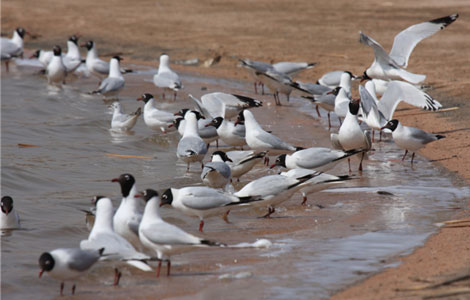
|
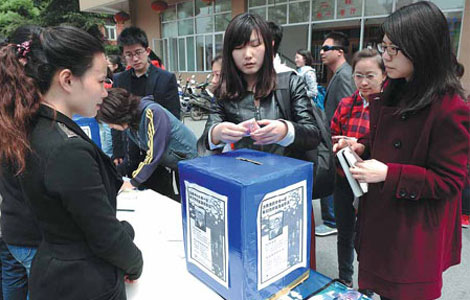
|

|

|

|

|

